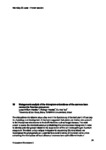Use este identificador para citar ou linkar para este item:
http://www.alice.cnptia.embrapa.br/alice/handle/doc/1036658Registro completo de metadados
| Campo DC | Valor | Idioma |
|---|---|---|
| dc.contributor.author | MENDES, L. W. | pt_BR |
| dc.contributor.author | MENDES, R. | pt_BR |
| dc.contributor.author | TSAI, S. M. | pt_BR |
| dc.date.accessioned | 2016-02-13T03:22:07Z | - |
| dc.date.available | 2016-02-13T03:22:07Z | - |
| dc.date.created | 2016-02-11 | pt_BR |
| dc.date.issued | 2015 | pt_BR |
| dc.identifier.citation | In: RHIZOSPHERE, 4., 2015, Maastricht. Stretching the interface of life: abstracts... Maastricht: Wageningen University & Research Centre and the Netherlands Institute of Ecology, 2015. Ref. 56. | pt_BR |
| dc.identifier.uri | http://www.alice.cnptia.embrapa.br/alice/handle/doc/1036658 | pt_BR |
| dc.description | The rhizosphere microbiome plays a key role in the functioning of the host plant, influencing its physiology and development. It has been suggested that plants use mechanisms present in the rhizosphere microbiome to fend off infections, such as fungal diseases. This work aimed to assess the microbial community inhabiting the common bean rhizosphere in order to identify potential groups related to the suppression of the soil-borne pathogen Fusarium oxysporum. Therefore, using shotgun metagenomic sequencing (Illumina Miseq), we investigated the phylogenetic and potential functional diversity of microbial communities colonizing the rhizosphere of four cultivars of common bean with different levels of resistance to the fungus, ranging from high susceptibility to resistant. Quantitative PCR of total bacteria in rhizosphere samples showed in increase of 16S rRNA copy number with the increase of resistance to the fungus. Mesocosms experiments, including four common bean cultivars cultivated in Amazonian Dark Earth and three replicates, were conducted in greenhouse conditions and we obtained over than 12 million metagenomic sequences. The overall microbial diversity did not present significant variations across common bean cultivars. From the classified sequences, 97,4% were affiliated to Bacteria and 1,48% to Archaea. Proteobacteria represented the most abundant phyla (41,7%), followed by Actinobacteria (29,4%), Firmicutes (5,9%) and Acidobacteria (4,1%). The microbial communities structure were different between bulk soil and rhizosphere samples. Comparing all bean cultivars, the resistant one showed an overrepresention of the phyla Spirochaetes, Nitrospirae and Euryarchaeota. The resistant bean cultivar presented high number of sequences affiliated to the genus Bacillus. Interestingly, the resistant and moderately resistant cultivars, presented high proportion of sequences related to bacteriocin, a narrow spectrum antibiotics. Preliminary analysis showed that different common bean cultivars could select differential microbial groups in the rhizosphere environment. Further analysis will search for bacterial groups potentially related to the fungal antagonism. | pt_BR |
| dc.language.iso | eng | eng |
| dc.rights | openAccess | eng |
| dc.subject | Metagenômica | pt_BR |
| dc.title | Metagenomic analysis of the rhizosphere microbiome of the common bean resistant to Fusarium oxysporum. | pt_BR |
| dc.type | Resumo em anais e proceedings | pt_BR |
| dc.date.updated | 2016-02-13T03:22:07Z | pt_BR |
| dc.subject.thesagro | Feijão | pt_BR |
| dc.subject.thesagro | Fusarium Oxysporum | pt_BR |
| dc.subject.nalthesaurus | Metagenomics | pt_BR |
| dc.format.extent2 | 34-35 | pt_BR |
| riaa.ainfo.id | 1036658 | pt_BR |
| riaa.ainfo.lastupdate | 2016-02-12 | pt_BR |
| dc.contributor.institution | L. W. MENDES, ESALQ/USP; RODRIGO MENDES, CNPMA; S. M. TSAI, ESALQ/USP. | pt_BR |
| Aparece nas coleções: | Resumo em anais de congresso (CNPMA)  | |
Arquivos associados a este item:
| Arquivo | Descrição | Tamanho | Formato | |
|---|---|---|---|---|
| 2015RA067.pdf | 79,32 kB | Adobe PDF |  Visualizar/Abrir |









